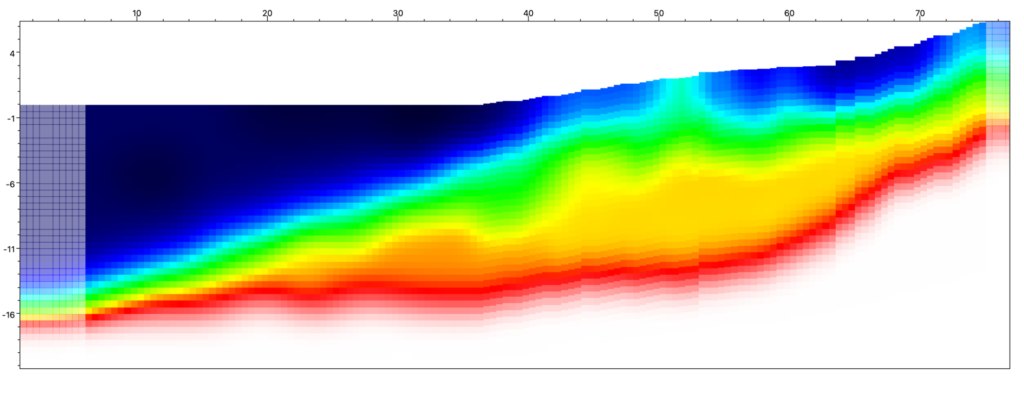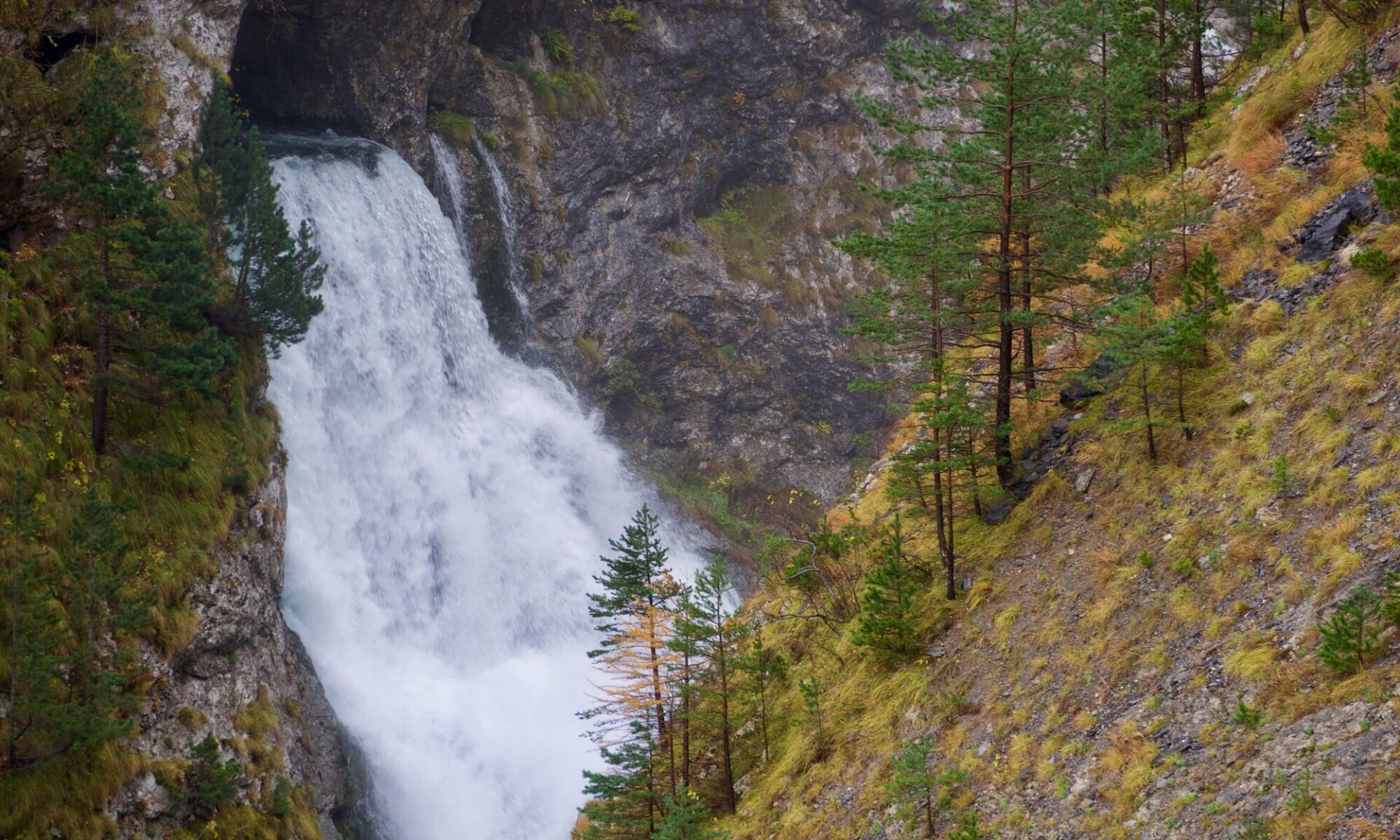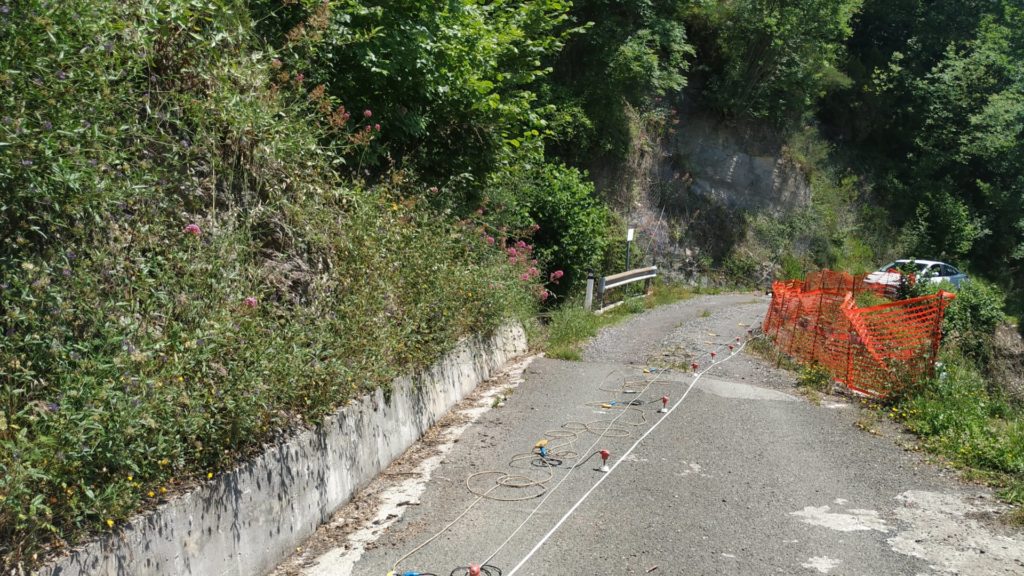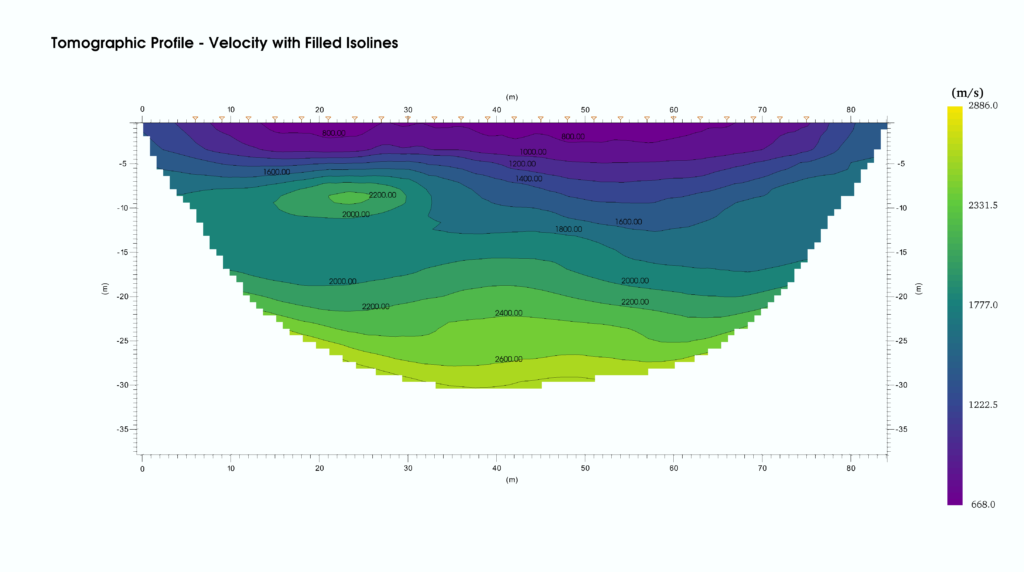
Introduction
SmartTomo’s ability to process complex refraction tomographic profiles is tested using data computed on synthetic velocity models. The synthetic velocity model represents a geologic model sketched with the characteristics to be tested. The synthetic model is used to simulate a refraction seismic acquisition by recording arrival times at the geophone location. The recorded data will be used to perform tomographic processing in order to compare the tomographic result with the synthetic geological model (groundtruth).
Continue reading “Case study – Model of alluvial deposits at the foot of a slope”


